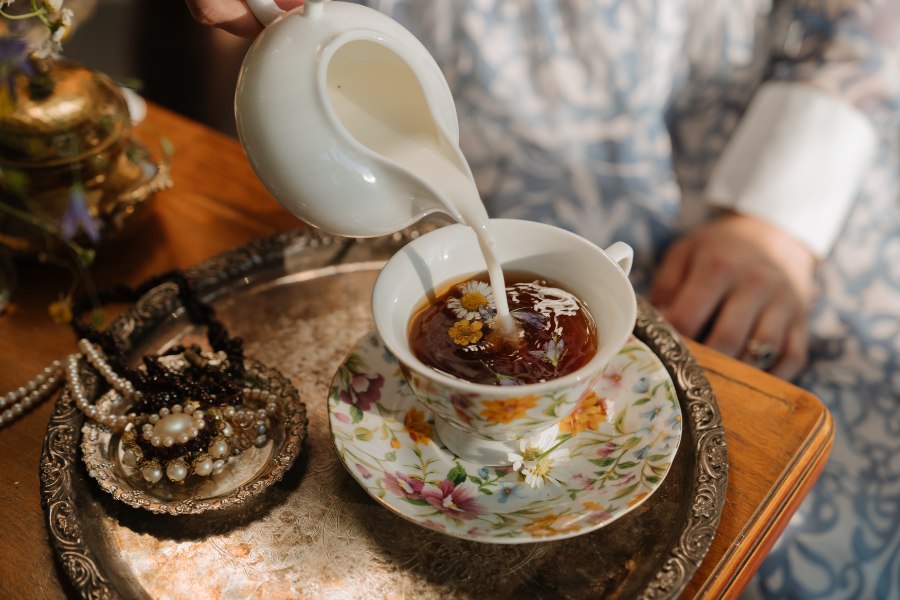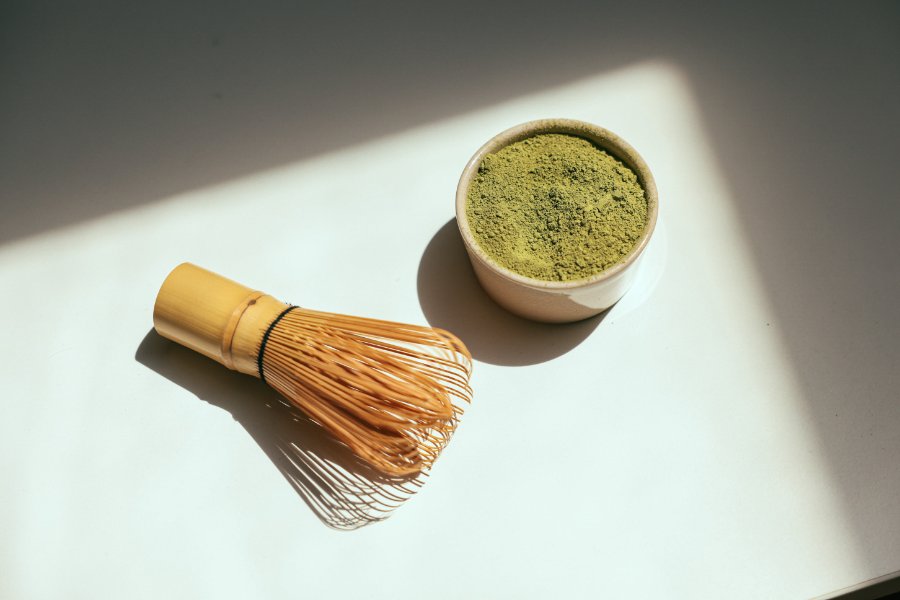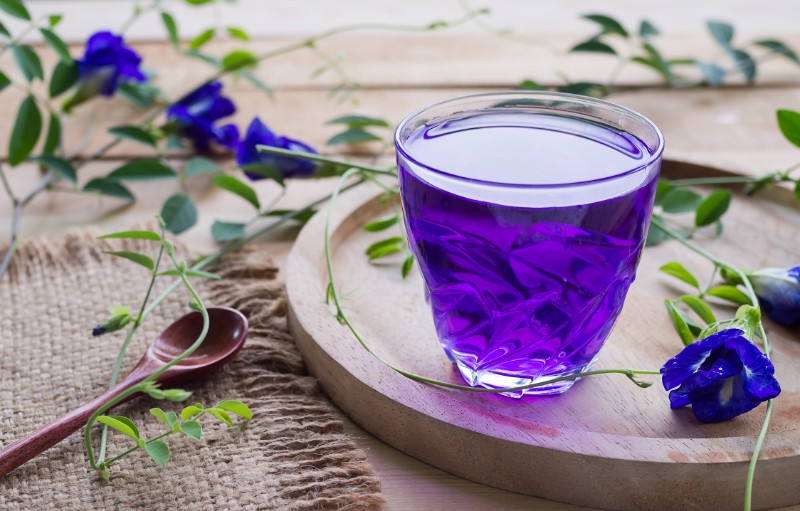
24 March, 2021 | Bon Tea Cafe Updated 2021
Butterfly Pea Flower Tea: Why It's Taking The World By Storm
In the world of teas, no herbal tea stands out unique with its beauty more than butterfly pea flower tea. With its intense, passionate, and mesmerizing deep blue color and a pleasant and light, refreshing flavor, this blue butterfly pea flower tea is a must-try.
Several herbal teas have made lasting impressions on tea lovers worldwide. And that includes tea made from flowers such as chamomile and blue tea, also known as blue tea. The blue tea is excellent for daily drinking, afternoon tea parties, and relaxing alone or with your friends and families.
The beverage has unique color-changing abilities, which can change from deep indigo to sapphire and translucent powder blue. Its remarkable color transformation depends on how much (and how long) you steep the herbal tea. No wonder it is taking the world by storm!
Aside from the exquisite taste and fascinating color changes, it has numerous health benefits. Let's find out everything you need to know about butterfly pea flower tea.
What Is Butterfly Pea Flower Tea?
Blue butterfly pea flower tea comes from the butterfly pea plant's deep blue called the Clitoria ternatea. It is also called blue tea, Asian pigeonwings, and blue pea. Southeast Asians have been brewing this herbal tea for a long time, but it recently reached the United States and Europe.
As said earlier, the blue tea's uniqueness is its color transformation, vibrant hue, and flavor profile. When you infuse the petals into hot water, the plant produces a charming, rich blue color.
However, when you add ingredients such as lemon juice to the blue tea, it changes to bright red or fuchsia. Think of mood rings, but in a liquid form with exquisite taste!
Why Blue Tea Color Changes?
The color changes are due to the new ingredients' effect on the pH level. When lemon is added, it increases the blue tea's acidity, resulting in a purplish color. The blue pea immediately turns red when you add hibiscus leaves. Its color-changing properties make it an excellent addition to an afternoon tea in your favorite tea shop with your friends.
The blue butterfly pea flower tea has a woody and earthy flavor, and it has a similar taste to that of fine green teas and a lightly sweet aroma. You can blend the blue tea with lemon, chamomile, honey, and lemongrass.
Thailand has its unique butterfly pea flower tea recipe called Nam Dok Anchan. It includes blending the blue petals with cinnamon, mint, honey, and passion fruit. The blue tea petals have been used for years in Asian traditional medicine, including culinary dishes. The vibrant blue colors are also used for food coloring and other dyes.
What Does Butterfly Pea Flower Tea Smell And Taste Like?
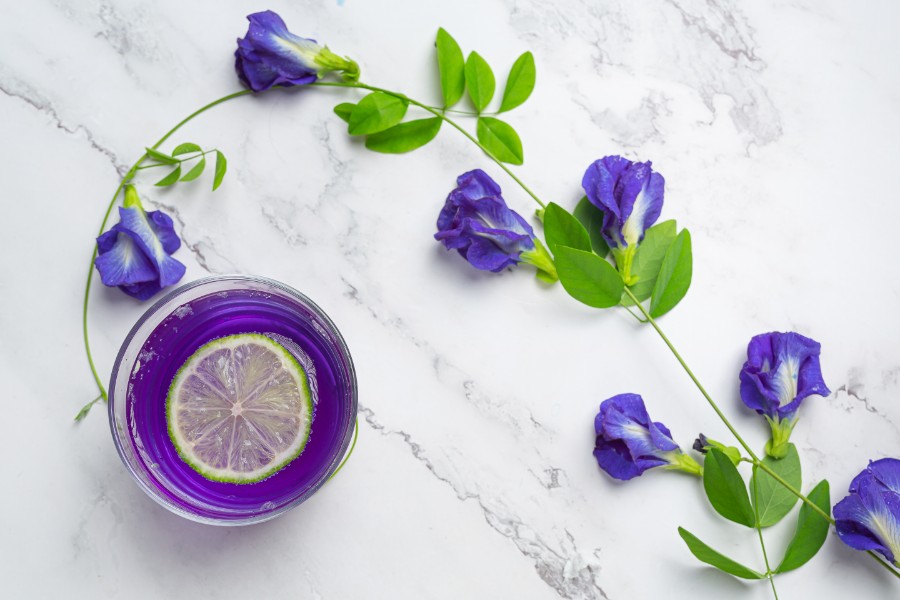
Blue tea comes with a unique scent. It is woody and earthy and has a similar scent to that of tempeh. When steeped, the scent changes to a lightly citric and sour, similar to hibiscus tea.
Regarding the taste, the flavor is highly delicate. It is slightly sweet and woody, with a light floral taste. It is deeply refreshing and not that intense as you would expect from the smell. Blue tea tends to have a broader impression on a more overall tea drinking populace. It can be used in numerous ways to add color to your beverage without significantly changing the flavor.
When you compare the blue tea with other floral-herbal teas like jasmine tea, lavender, or rose, it has the most delicate flavor. And many tea drinkers will find it more pleasing!
What Is The Level Of Caffeine In The Blue Tea?
Butterfly tea is a caffeinated herbal tea. So it is suitable for you if you are sensitive to caffeinated drinks. It is also ideal for the elderly and younger people, and you can drink it daily.
Butterfly Pea Flower Tea Recipe
You can brew butterfly tea as a hot drink or iced tea. To make a butterfly pea flower tea recipe, you have to get dried butterfly pea flowers or a powder. You can use fresh flowers too, but it isn't easy to find such flowers outside South East Asia.
Use the dried flowers to make herbal infusions and the powder to make smoothies or lattes. The powder is sometimes called blue matcha, but it does not give you the same bubbly drink if you prepare it with a whisk.
Blue tea is excellent for outdoor summer tea parties, and you can mix it with other ingredients like green tea. However, remember that mixing the blue tea with other ingredients can change the pH levels, changing the color.
How To Make Blue Tea
For each cup of water, use about 5-7 dried flowers. Preferably, use fresh spring water to make the blue tea. Boil the water and let it cool down to about 205°F. You have to preheat your teapot, and you can do this by pouring hot water in and out.
Add the blue flowers and steep for about five minutes. Make sure to not over steep. Even though the tea is not likely to develop bitterness like green tea, the pleasant flavor can change or reduce.
You can now strain and add sweeteners. If you want the blue tea served cold, let the tea cool down and add ice cubes. You can include other ingredients such as drops of lemon to bring out its intense purple color.
Lime brings out the greatness of the blue tea, and it comes with a delicate citrus flavor. You can begin with small drops of lime and more until you get to your preferred color. Also, you can almost use any teapot to make blue tea. If you do not have a teapot or a strainer, you can steep the flowers and take out the flowers with a spoon.
Essential Benefits Of Drinking Butterfly Pea Flower Tea
Butterfly tea has numerous health benefits and has been used for decades for its medicinal properties. Furthermore, research has shown that blue tea is both safe and effective, and you can drink it without any potential side effects. Here are some of the notable benefits of drinking blue tea:
Blue Tea Provides Antioxidant Effect
Studies have revealed that blue flowers provide antioxidant activity both when applied or ingested. It may give a high free radical activity compared to oregano and be used in beauty products to provide antioxidant activity. It can also help fight off aging.
Boost Your Memory
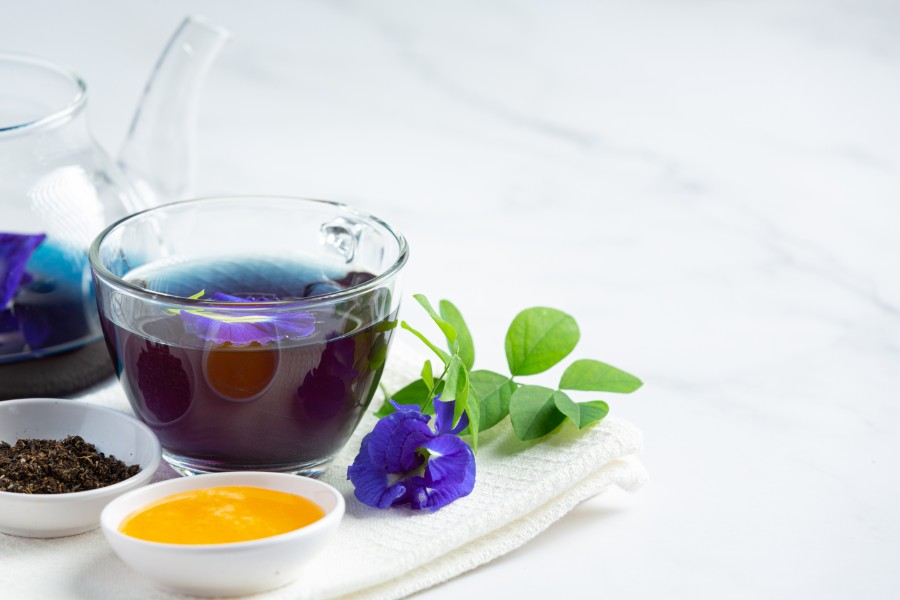
The blue flower has been used for years as a mood and memory-boosting plant in Ayurveda. Research shows it may contain a "nootropic, anti-stress, anti-depressant, anticonvulsant, and anxiolytic effect. In other words, blue tea can enhance your cognitive function and give you overall benefits to your psychological well-being.
Conclusion
If you want to have a great time sipping tea while gaining numerous health benefits, butterfly pea flower tea is the right choice for you. Its fantastic flavor and color-changing effect can give you an excellent lasting impression. You can make the blue tea on your own or enjoy the drink with your friends at various tea and coffee shops. You can purchase both non-organic and organic flowers. However, when you are buying, consider the shape and color of the flowers. Keep the real blue tea flower in an airtight container and keep it from humidity, heat, sun, or mold. There is also a recommendation to use the product so use it within those times. You can order online to have a specially made blue to send to you!



